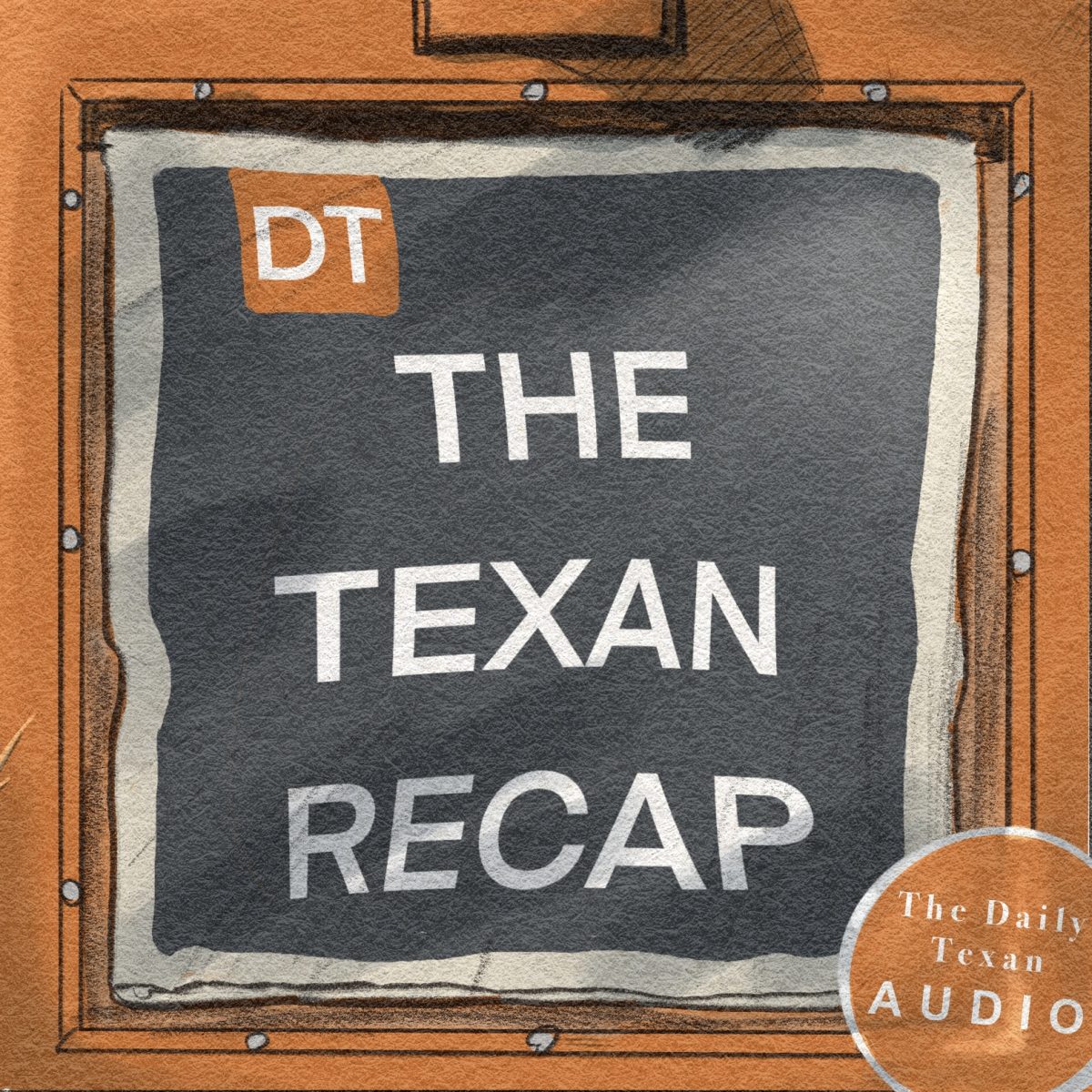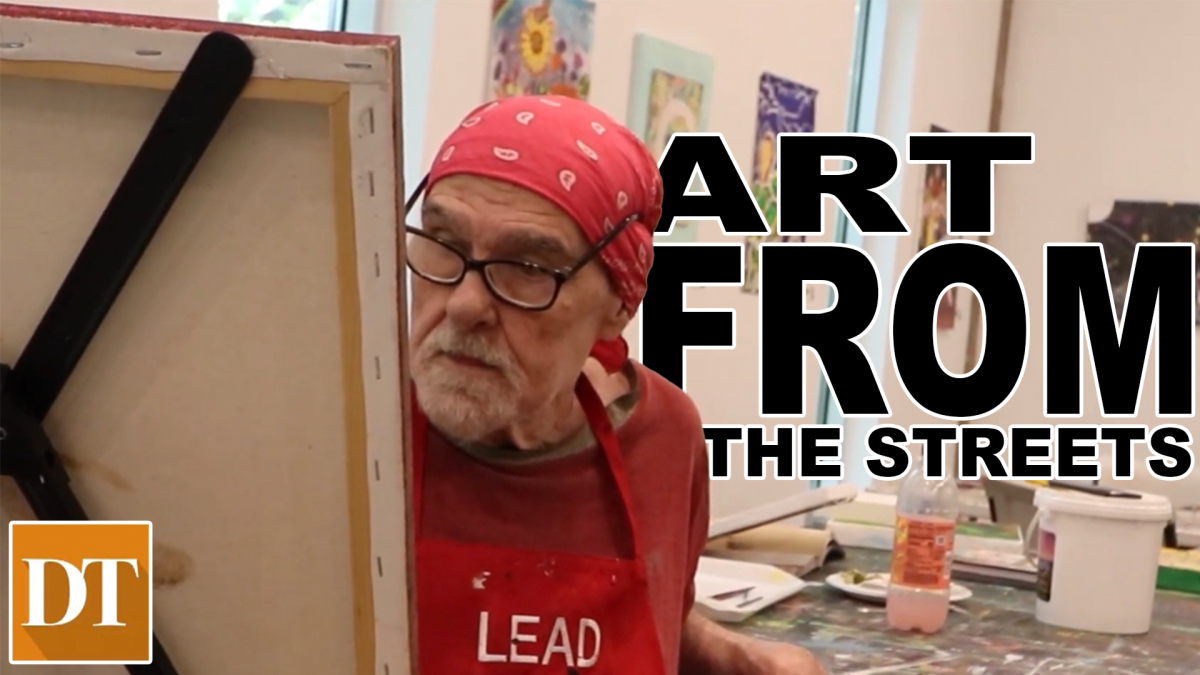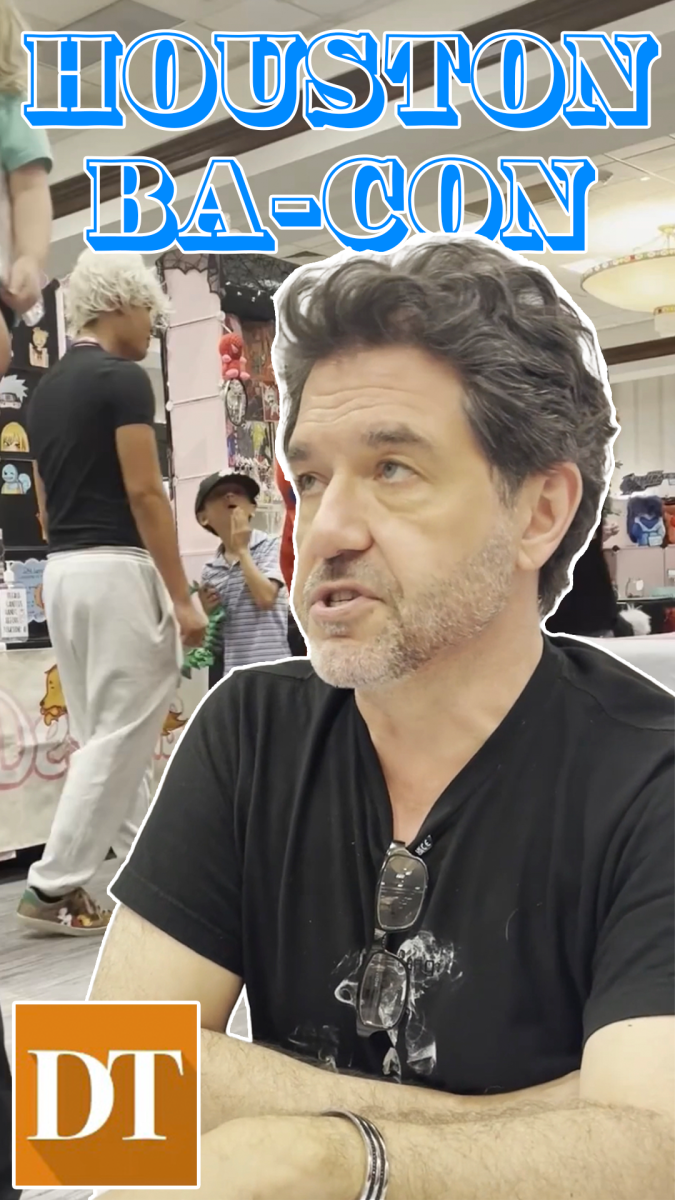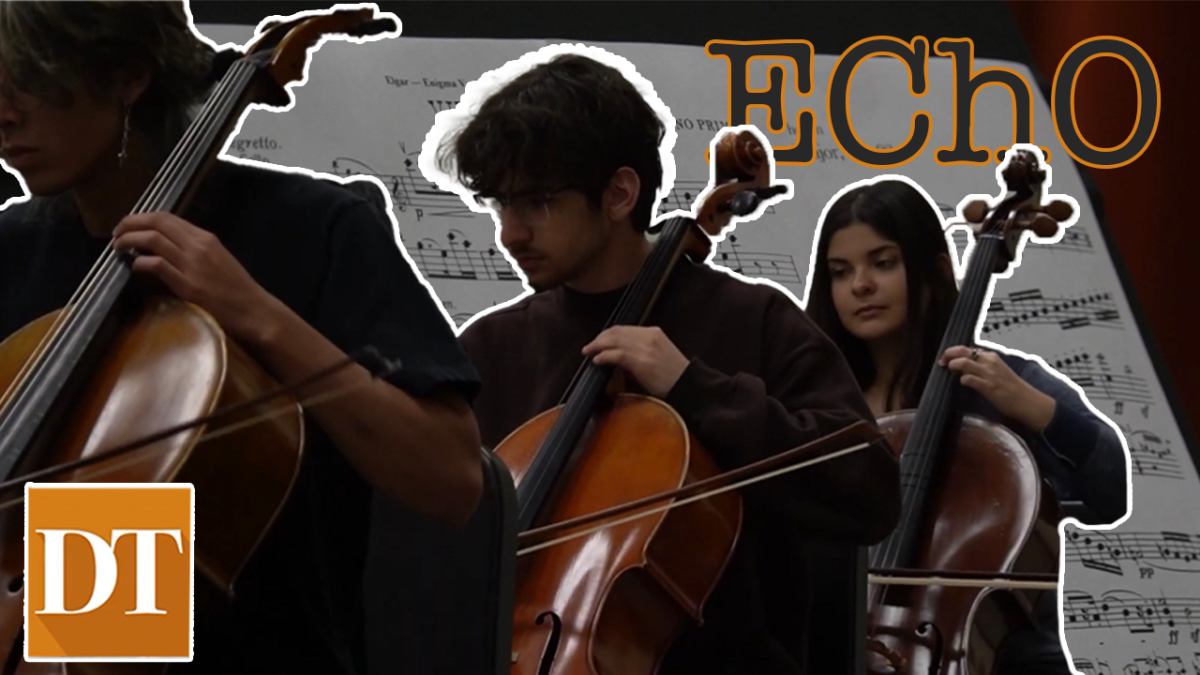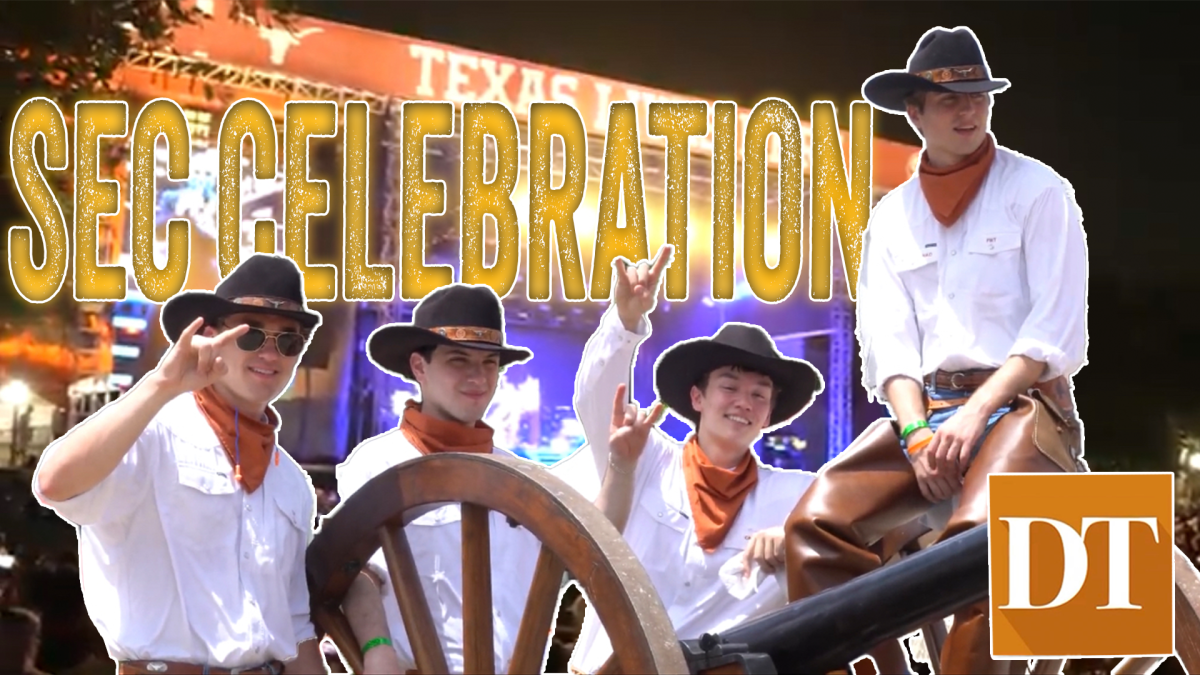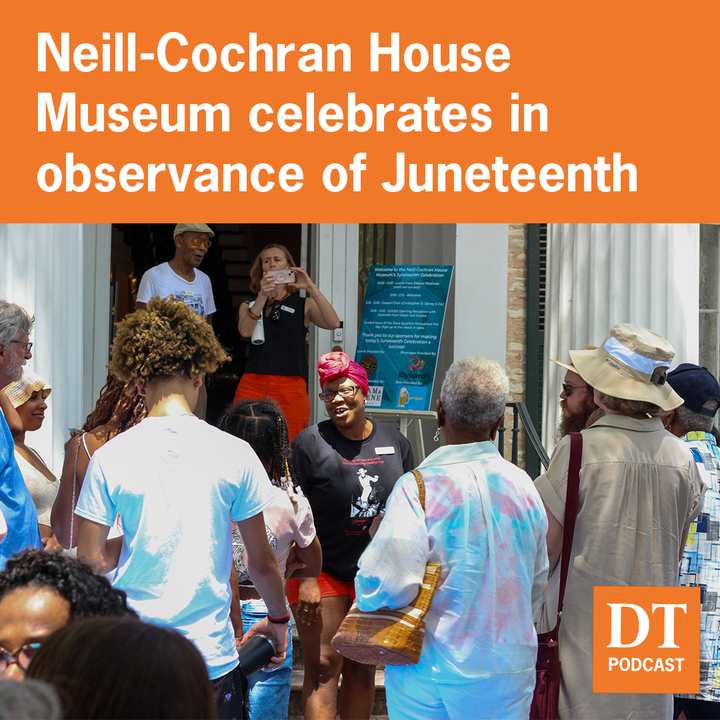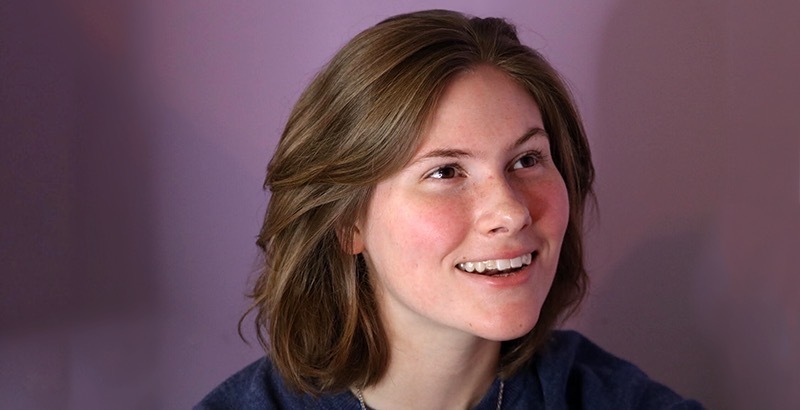In this episode of the weekly recap, audio producer Alistair Manliguez chats about approval for a new LGBTQ+ historical marker in Austin. Plus, hear about UT’s Talk Time program for non-native English speakers.
Reported by Emma Nguyen and Jane Goldberg. Hosted by Alistair Manliguez. Edited by Jack Lewellyn. Supervised by Aislyn Gaddis. Cover art by Emma Berke. Music by Top Flow Productions.
*upbeat music*
Alistair Manliguez: The City of Austin approves a new LGBTQ+ historical marker…and, a volunteer-run language program for non-native English speakers offers community and connections
I’m your host this week, Alistair Manliguez and this is The Texan Recap.
Here’s what you missed this week.
*upbeat music*
Alistair: The Austin City Council recently approved the installation of a new historical marker commemorating the city’s unofficial LGBTQ+ district. Emma Nguyen is here to share more. Thanks for joining me, Emma
Emma Nguyen: Thanks for having me
Alistair: So tell me about this new historical marker. Where will it be located?
Emma: Yeah, so this historical marker is going to be located on Fourth and Colorado Street, which is in downtown Austin. And it’s being placed there. So that street has a lot of historical gay bars on it, like Oilcan Harry’s. And so the marker is being placed there to kind of commemorate the cultural and historical significance of those gay bars.
Alistair: And why is that location significant?
Emma: So it’s especially significant because both obviously, historically, it’s been a hubbub of queer life in Austin. But it also continues to be a place where the LGBTQ community continues to hang out. And so is especially significant both for like, historically what it has meant for the city of Austin, but also for the function that it’s currently like doing, right.
Alistair: What did the people you talked to tell you about the marker’s importance to the LGBTQ+ community?
Emma: Yeah, so as I previously mentioned, bars are a huge space for the LGBTQ community in terms of socialization. So according to the city of Austin’s 2021, quality of life report for LGBTQIA-identifying individuals, over 51%, or about 51%, of queer Austinites reported that they hang out in bars, or like clubs or spaces like that, for social events, right.
And so these bars, like Oilcan Harry’s, or like Rain, that are on Fourth Street, are really big, because like that’s where the LGBTQ community will congregate for like social spaces, right? Like those are their safe spaces. And so that’s number one of like, why it’s important. And so it’s not just like the historical importance, but also like the current importance of having those safe spaces for the LGBTQ community to gather and like socialize and have fun together.
Alistair: There are still some concerns, though. Can you tell me a little bit about those?
Emma: Yeah. So this Fourth and Colorado Street kind of also appeared in the news last year, because what happened was around like April, or May, there was this high rise that was intending to demolish these historical properties on Fourth Street, in order to like develop a high rise there, right. And so what happened was the Historical Landmark Commission then moved to designate these properties with historical protections, i.e. these properties would have like legal protections that would make it much harder for them to be demolished. And that happened in May of last year.
However, then in June, the Historical Commission then reversed its decision, right. And so now it’s uncertain about the future of these properties because they no longer sort of have those legal protections that are afforded to them, right. Therefore, like they could still potentially be demolished with this marker. In particular, it’s also not quite clear whether or not it’s the kind of historical marker, which designates those legal protections. And so there’s two kinds, one that is more commemorative, and one that will actually protect the properties like structurals, and they can be on those streets.
Alistair: Do we have any idea of when the marker will be installed?
Emma: Not currently. So all that’s happened is just that Austin City Council has approved the installation of the marker in the draft resolution, what will happen is that the city manager will be consulting, LGBTQ+ community leaders for what are the best sort of things to be putting on the marker, i.e. what kind of events or figures within the queer community should be best highlighted on the marker. And so that’s sort of what’s happening right now. And then later on the marker will be installed.
Alistair: And that was General News Reporter Emma Nguyen. Thanks for taking the time to talk to me.
Emma:: No problem. Thank you.
*upbeat music*
Alistair: The weekly Talk Time program offers a space for students enrolled in UT English Language Center courses to connect with volunteer native English speakers. General Life & Arts Reporter Jane Goldberg is here to tell us about it. Thanks for joining me, Jane.
Jane Goldberg: Thank you so much for having me.
Alistair: So what is the Talk Time program?
Jane: Yeah, so essentially what the Talk Time program is is a program housed within the English Language Center here at UT. And that provides international students and students looking to improve their English with a space to converse with native English speakers who attend the program as volunteers from about 4:30 to 5:30 p.m. On Tuesday evenings during this fall semester, students and volunteers come together to have those conversations in a really low-pressure casual environment.
Typically, Ellen, who serves as the Talk Time coordinator, will provide a series of conversation starters at the start of each session. And these range from topics like modes of transportation to the question, have you ever dreamed in English, and from there the conversation sometimes diverts to more personal topics. And that’s really where the friendships within talk time begin to form. And that’s just one of the many beauties of the program.
And the rooms are also divided by levels. So there are beginner, intermediate and advanced spaces that students can select to participate in. Often students don’t get the opportunity to have those conversations within daily life or potentially in their classes so Talk Time provides a really awesome opportunity to practice in a really fun way.
Alistair: So how does the program help non-native English speakers get better at the language?
Jane: So one of the unique things about Talk Time is that because it is such a small group setting, students might feel more comfortable asking those questions and testing out their conversational skills that they maybe haven’t felt like practicing in other spaces while they’re in the classroom. Or maybe they’re at a store or a restaurant or something like that.
Alistair: So how does it offer a safe space for language learning?
Jane: Kind of expanding on what I mentioned earlier, the program provides a comfortable environment for practice. It’s a small group setting and the groups are divided by levels and it’s just really about learning and creating those relationships. Sometimes in a classroom setting, there might be nervousness about correctness or grammar. But at Talk Time there’s really no pressure to have the right responses and mistakes are welcomed. Sometimes the volunteers are also younger than Talk Time students, which might also add another aspect of comfortability because there’s less of an instructor-to-student relationship and more of a friendship there.
Alistair: And finally, how does it offer a space for community and connections beyond just learning English?
Jane: I think initially, the main intent of the program was to provide that casual conversational space for students to practice English, but it definitely has doubled as the space of community to the volunteers and students have become friends with one another. So many hang out outside of the weekly talk time sessions. So those friendships are generally built within the program but then expand outside of it. So recently, students and volunteers have also made a group chat so they can have socials and eat dinner together at Austin area restaurants after talk time. I was speaking with another volunteer and he was telling me that he’ll go to hockey games with students. He recently helped one student that he met at talk time move into his apartment in New York. So there are just many different special ways community and connections are being built through the program.
Alistair: And that was General Life & Arts Reporter Jane Goldberg. Thanks so much for being here today.
Jane: Thank you so much.
Alistair: And that’s The Texan Recap for the week of September 25. I’m Alistair Manliguez.
*upbeat music*
Alistair: The Texan Recap is a production of The Daily Texan Audio Department. If you like this episode, make sure you subscribe to The Daily Texan on your streaming platform of choice and follow us on Twitter @texanaudio. This episode was hosted by me, Alistair Manliguez, edited by Jack Lewellyn and supervised by Aislyn Gaddis. Special thanks to Emma Nguyen and Jane Goldberg for their reporting and to Katy Nelson, Mimi Calzada and Chloe Moore for contributing to this project. Cover art is by Emma Berke and music is by Top Flow Productions. To read the news stories in this episode or see more from the Texan, head on over to www.thedailytexan.com. Thanks for listening, and I’ll see you next week!



